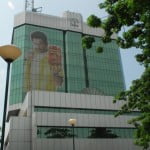
Strangely, Amara Raja lost power with operating margin of 17.2% coming 110 bps lower than forecast and just a tad higher than a year before. Photo: Mint
The September quarter performance of the two leading battery makers confirmed the Street’s fears. A month ago, this column had highlighted that demand growth for this segment was losing the punch it had in the last three years (Batteries: valuations appear rich as sales likely to decline).
Net revenue of both Exide Industries Ltd and Amara Raja Batteries Ltd fell short of the already watered-down forecast on the Street. The former fell marginally from a year back while the latter at least clocked a 9% expansion. A big let-down during the quarter was industrial battery sales, which slowed down substantially.
Exide Industries’ media release highlighted subdued demand in the segment, which includes solar, inverter and power batteries. Amara Raja’s media release echoed that sentiment with an added note on stiff competition by imports from the ASEAN countries, as high raw material import duties make domestic products less competitive.
The industrial segment accounts for 35-37% of the total revenue of both these battery firms. The sluggishness in this segment, along with slow original equipment sales in the auto segment and pass-through of low material costs to customers, led to weak revenue traction.
However, the reversal in profitability trend of the two firms stood out in the quarter’s performance, especially as both announced results almost at the same time on Wednesday. Exide Industries’ operating margin was sliding for several quarters on weaker sales as it was tied down due to capacity constraints. The September quarter’s operating margin of 14.8% stumped the Street as it was 100 basis points (bps) higher than Bloomberg’s consensus forecast and 300 bps higher year-on-year (y-o-y). One basis point is 0.01%. Strangely, Amara Raja lost power with operating margin of 17.2% coming 110 bps lower than forecast and just a tad higher than a year before.
Pressure on profit margins was evident inspite of lower lead prices, although it was partially offset when the rupee weakened. Subdued sales across segments—auto, industrial and home inverters—took away the benefits of higher operating leverage too. Exide Industries’ operating profit toed the outperformance in profit margin and was slightly higher than what the Street expected. But Amara Raja’s operating profit rose 10.3%, which was far lower than the 23.4% growth at Exide Industries on the same parameter.
Given the strong cash accruals, both the firms are not saddled with high interest burden—a key worry in the manufacturing sector.
That said, both Exide Industries and Amara Raja pulled off a net profit growth rate of about 22-24%. However, the stocks reacted differently. Exide Industries’ held out with shares falling marginally. Amara Raja’s disappointment on margins did not go down well with investors. The stock, whose valuation had overtaken that of the market leader Exide Industries after sustained outperformance over many quarters, corrected by a sharp 6.3%. Subdued sales may continue to cap upside in both stocks in the near term.
The writer does not own shares in the above-mentioned companie
[“source -livemint”]




